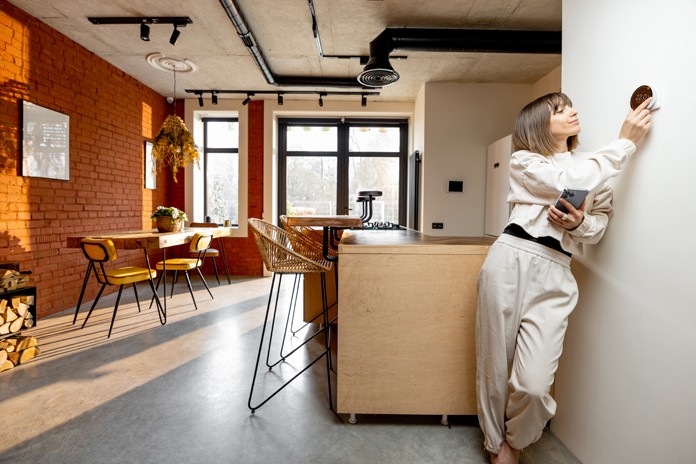
Did you know the average American spends $1,400 a year on electricity? When combined with other utilities—gas, water, internet, etc.—the bill can easily add up to $5,000. This means that electricity alone accounts for 5 – 10% of most people's income. The good news is that by making some simple changes around your home, you can be on your way to lowering your energy bill by as much as 25%. Let's take a look at 6 quick and effective ways you can start saving on your energy bill.
1. Change Your Light Bulbs to LEDs
Switching to LED bulbs can lead to significant cost savings. LED bulbs use at least 75% less energy than incandescent bulbs. They also cost you over four times less. This means if you switch to LEDs, you'll start saving on energy and money too. You can even go all digital and upgrade to smart light bulbs. This new generation of low-energy LED bulbs allows you to control the lighting in your home with your phone or voice commands and are easy to install.
2. Purchase Energy-Efficiency Appliances
The energy-efficient appliances market has expanded over the years as consumers are increasingly looking for ways to save energy. Besides light bulbs, you can now get energy-efficient furnaces, conditioners, dishwashers, clothes dryers, refrigerators, and so much more. Energy-efficient products may be more expensive upfront but will save you electricity in the long run. To save on energy bills, purchase Energy Star appliances that meet the US Department of Environmental Protection's (EPA) energy efficiency standards.
3. Install Light Dimmers
The key to saving energy is right within your home. Install dimmer switches! Using dimmable lights can conserve electricity when watching TV or doing other activities. These dimmers allow you to adjust the brightness in the space, so you can achieve your desired or ideal brightness. Dimmer lights can also save you money by elongating the life of your bulbs.
4. Use Solar Power
Solar panels use the energy from the sun's rays to generate power. Though they require a hefty initial investment, the energy savings over time can be significant. According to Home Advisor, solar panels could save you around $20,000 in energy bills over a 20-year period. You may also qualify for a rebate or tax break by installing solar panels.
5. Install a Programmable Thermostat
Why waste electricity cooling or heating your home when you're not there? Install a programmable thermostat! These smart gadgets have sensors that detect when you're not at home and adjust the temperature accordingly. Better still, you can even control them remotely with your smartphone to cool or warm for when you get back from work. You can even have the thermostat set to the most cost-effective levels when no one is at home.
6. Insulate Your Home and Reduce Air Leakage
Air leakage is a major source of inefficiency in any building. When cool air in summer and warm air in winter escape, your HVAC system is forced to work harder. This often results in high energy bills. An energy audit can help identify sources of air leakage in your home and areas that would benefit from insulation. Depending on the source of the leakage, you may be able to fix the problem with some weatherstripping. In some cases, you may have to replace the doors, windows, or even the roof to improve energy efficiency.
Wrapping Up
No matter where you live, there are things you can do to save on energy bills. From changing your lightbulbs to installing solar panels and insulating your home—the secret to saving energy is right within your home. Having an energy-efficient home comes with many advantages, not the least of which is savings on your electricity bill. While there are no federal rebates for efficient purchases, many local governments, state governments, and utilities offer rebates and incentives for energy-efficient purchases. So, go ahead - you have everything to gain - start saving!
